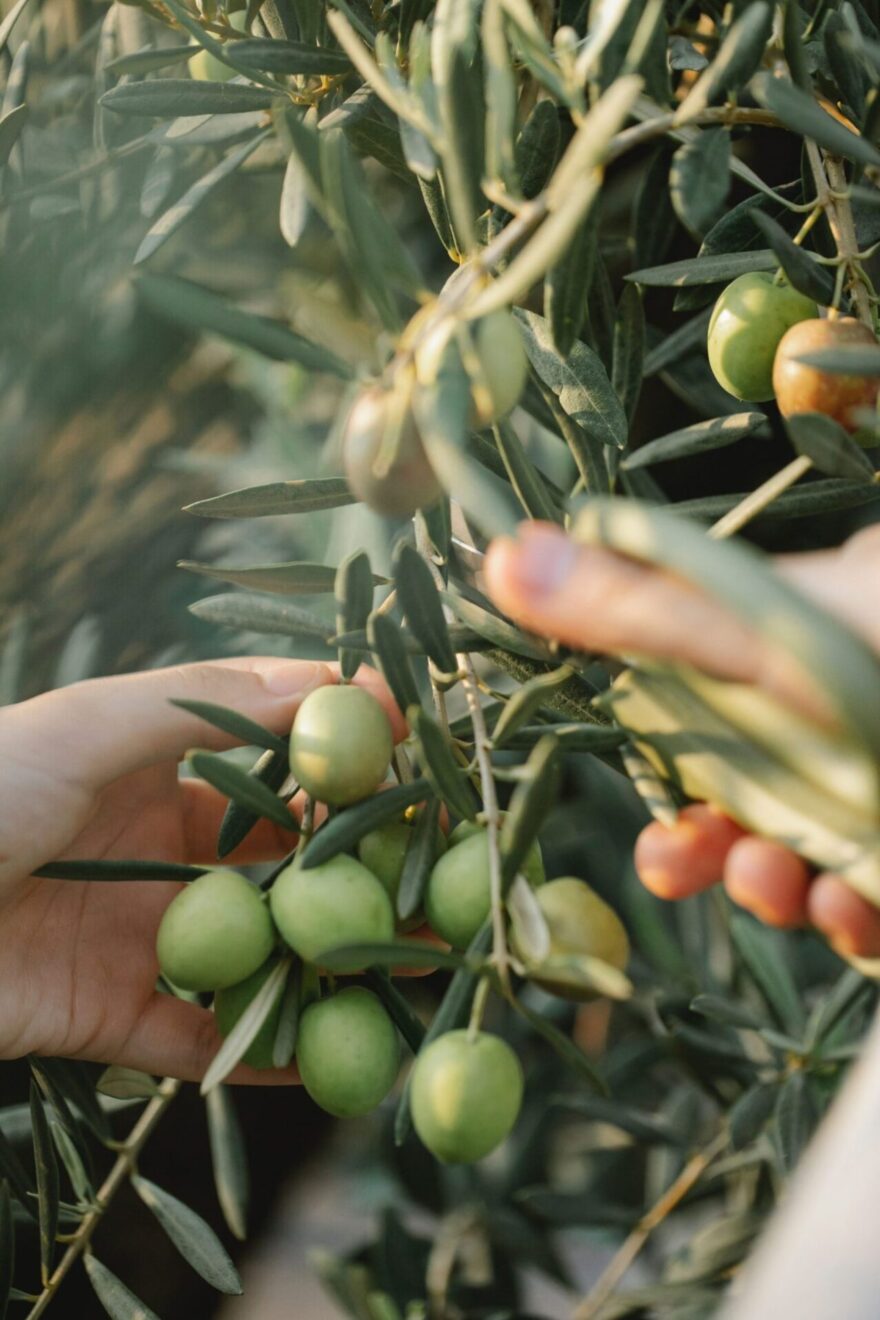Baking with olive oil: three things you need to know
Frying in olive oil, is that a good or a bad idea? You’re definitely not the only one wondering this, so it’s urgent to provide clarity. Here are three interesting facts about cooking and baking with olive oil.
1. Everything revolves around the smoke point
No doubt you’ve experienced it before: you leave a pan of butter or oil on the stove a little too long, and blue smoke comes out of the pan. Not ideal for your freshly painted walls or curtains, but especially not for your health. The butter or oil burns at that point, releasing unhealthy substances. Degradation products such as PAHs (polycyclic aromatic hydrocarbons) are formed. Some of these can damage DNA and are therefore carcinogenic. You want to avoid those harmful effects, of course, so it’s a matter of making sure you don’t go to the smoking point.
Now, each type of fat or oil has a different smoke point. In other words, some you can heat to a high temperature, with others you have to be more careful. The key, therefore, is to choose a type of fat whose smoke point is higher than the temperature at which you will be frying or cooking. The temperatures at which we typically do this are:
- Cooking: 100°C
- Baking in the pan: 120 to 220°C
- Baking in the oven: 160 to 220°C
- Frying: maximum 180°C
- Wokking: 160-240°C
So what about the smoke point of the various fats we use in our cooking? This is a list of the most common products:
- Refined olive oil: 199-243°C
- Virgin olive oil: 210°C
- Extra virgin olive oil with low acidity, of good quality: 207°C
- Extra virgin olive oil: 160-190°C
- Butter: 150°C
- Clarified butter: 250°C
- Sunflower oil: 227°C
- Grapeseed oil: 216°C
- Peanut oil: 227-229°
- Refined coconut oil: 200°C
- Refined, dry coconut oil: 204°C
- Unrefined virgin coconut oil: 177°C
Two things stand out in this list of the different smoke points:
- The smoke point can vary with the same product, depending on how it is made. For example, you can see big differences between extra virgin olive oil and refined olive oil. If you heat extra virgin olive oil too much, it is detrimental to the antioxidants and polyphenols in the oil.
- Sometimes you see that even by type of oil there is still a wide range of temperatures at which the oil starts to smoke. That brings us to the next topic, quality.
2. The more qualitative your oil, the higher the smoke point
Extra virgin olive oil has a smoke point that can range from 160° to 190°, and even go up to 207°C. How can that be? This is where the quality of the oil plays a role. Acidity is one of the elements that determine the quality of olive oil. The lower the acidity, the better the olive oil. To be called an extra virgin olive oil, the acidity must be below 0.8 percent. This is not about acidity in terms of pH, but about the percentage of free fatty acids. At the last harvest, Casa Astrid’s extra virgin olive oil had an acidity of 0.1 percent. A nice proof of the high quality of the product.
With virgin olive oil, the acidity can be a maximum of 2 percent, and with refined varieties it can go up to 2.5 percent. So acidity is a good indicator of quality, but at the same time it is also a good indicator of the smoke point of olive oil. The lower the acidity, the higher the smoke point. So you don’t just buy that good bottle of oil because it’s tastier, you can also use it to fry in at the right temperature and you’re less likely to risk going above the smoke point. An investment in a good bottle of olive oil, is therefore an investment in taste and in your health.
No matter how high-quality your oil may be, make sure it is not spoiled. Olive oil does not get better with age. Light, oxygen and temperature differences cause the oil to oxidize, and therefore it will smoke faster.
Are you using an unfiltered oil? In that case, the smoke point is lower. That’s because there are tiny pieces of olive still floating in the oil. These burn faster than the oil, which again will give you that typical blue smoke.
3. Choose your health, and use unsaturated fats
By the way, health is another important argument for choosing the right type of fat. Fats for food come in three types. The good fats are the unsaturated fats. Unhealthy are saturated fats and trans fats.
- Unsaturated fats are soft or liquid at room temperature. They come in two types: monounsaturated fatty acids and polyunsaturated fatty acids (including omega3 fatty acids). Liquid vegetable oils contain mostly unsaturated fatty acids. Examples are olive oil, sesame oil, sunflower oil.
- Saturated fats are often solidified at room temperature. Examples are butter, margarine, refined coconut oil.
- Trans fats are created by chemical processes that harden unsaturated fats. They are very unhealthy.
Olive oil consists of about 70 percent unsaturated fatty acids. So it is much healthier to bake or cook with olive oil than with regular butter, which is a saturated fat. The advantage of unsaturated fats is that they have a beneficial effect on cholesterol levels in our body.
Conclusion? You can fry, deep fry and cook in olive oil without a problem. Choose a quality variety, therefore the smoking point is higher. But always make sure you don’t overdo it with the temperature. In addition, olive oil is also a healthy choice to cook with anyway, thanks to its high amount of unsaturated fatty acids.
Order your bottle of extra virgin olive oil now to ensure a healthy basic ingredient for your kitchen.
